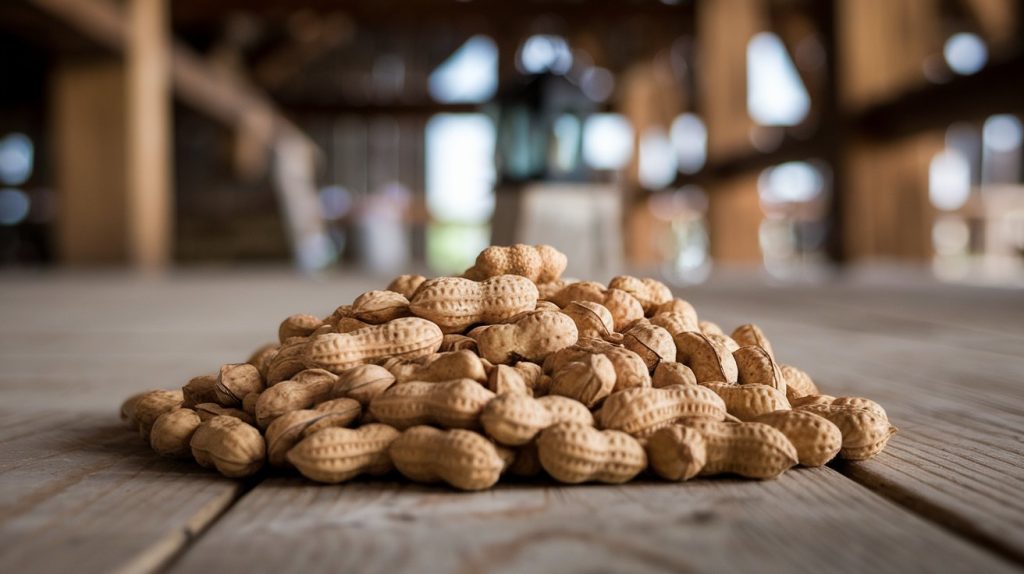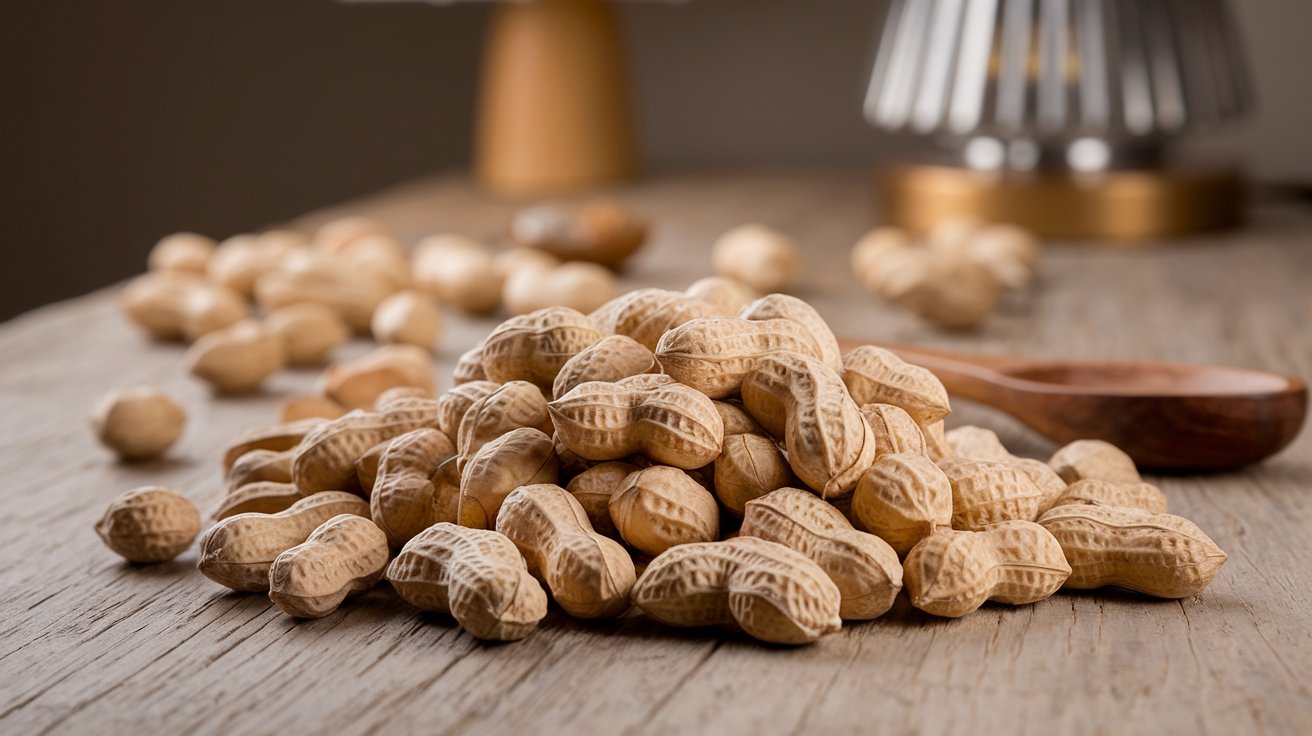Table of Contents
Can You Eat Peanut Shells? Peanuts are a beloved snack for many, whether at a baseball game, a party, or just as a quick treat. However, have you ever wondered if peanut shells are edible? This seemingly simple question might have crossed your mind as you cracked open a peanut and looked at the crunchy shell. While eating peanut shells may seem odd to some, others are curious whether they can be consumed safely. Can You Eat Peanut Shells? In this article, we’ll explore whether eating peanut shells is a good idea, the potential risks, and whether there are any benefits. Let’s dive in and uncover the shocking truth!
Can You Eat Peanut Shells? Understanding the Basics

Before we answer “Can you eat peanut shells,” it’s essential to understand what they are made of and why people might consider eating them.
What Are Peanut Shells Made Of?
Can You Eat Peanut Shells? Peanut shells, or peanut hulls, are the peanut’s hard, fibrous outer covering. They primarily comprise cellulose, lignin, and some residual proteins and fats. While cellulose is a natural plant fiber found in many fruits and vegetables, the texture of peanut shells is much more rigid, making them difficult to chew and digest.
Why Do People Consider Eating Peanut Shells?
You might wonder why anyone would even consider eating peanut shells. Some may wonder whether they’re wasting part of the peanut or if the shells could provide additional nutrients. Others may have accidentally eaten peanut shells and are curious whether it’s harmful. Let’s explore the reasons behind this curiosity and whether it’s a good idea to eat them.
Are Peanut Shells Safe to Eat?
The question “Can you eat peanut shells?” ultimately concerns safety. While peanut shells are technically edible, several factors must be considered before munching them.
The Risks of Eating Peanut Shells
Eating peanut shells can pose risks due to their tough, fibrous texture. Here are some potential issues:
- Digestive Problems: Peanut shells are difficult to chew and digest. Their fibrous nature can cause them to get stuck in your throat or digestive tract, leading to discomfort or even blockages in severe cases.
- Contamination: Peanut shells are only sometimes cleaned as thoroughly as the peanuts. They can be contaminated with dirt, pesticides, or other harmful substances. Consuming these contaminants can pose health risks.
- Choking Hazard: The intricate texture of peanut shells makes them a choking hazard, especially for children or those with Difficulty swallowing.
Potential Allergic Reactions
Peanut allergies are common and can be severe. While most allergic reactions are triggered by the proteins found in peanuts, it’s possible that traces of these proteins could be present on the shells. If you have a peanut allergy, it’s best to avoid eating peanut shells altogether.
Also read: Whole Foods Virginia Beach: Discover Hidden Local Delights
Are There Any Benefits to Eating Peanut Shells?
Can You Eat Peanut Shells? Now that we’ve discussed the risks, you might be wondering if there are any benefits to eating peanut shells. While they’re not commonly eaten, there are a few things to consider.
Fiber Content
One potential benefit of peanut shells is their fiber content. As mentioned earlier, peanut shells are made mostly of cellulose, a type of fiber. In addition to being beneficial for digestive health, fiber can help avoid constipation. However, the challenging nature of peanut shells makes them difficult to digest, and plenty of other, more palatable sources of fiber are available, such as fruits, vegetables, and whole grains.
Environmental and Industrial Uses
While not a direct benefit of eating peanut shells, it’s worth noting that they do have uses beyond consumption. Peanut shells are often used in agriculture as a mulch or soil conditioner. They can also be processed into animal feed or used as a biofuel. So, while eating them may not be the best idea, peanut shells have their place in other areas.
What Should You Do If You Accidentally Eat Peanut Shells?
If you accidentally eat a small amount of peanut shell, there’s usually no need to panic. Can You Eat Peanut Shells? However, monitoring your feelings and taking appropriate action if necessary is essential.
Possible Reactions to Watch For
- Mild Discomfort: You might experience mild discomfort in your mouth, throat, or digestive tract. This is usually due to the rugged texture of the shell and should pass with time.
- Choking or Difficulty Swallowing: If you feel like the shell is stuck in your throat or you’re having trouble swallowing, it’s essential to seek medical attention immediately.
- Digestive Issues: If you experience stomach pain, bloating, or constipation after eating peanut shells, this could be a sign that they’re causing problems in your digestive system. Drinking plenty of water and eating high-fiber foods may help ease the discomfort.
When to Seek Medical Help
In most cases, accidentally eating peanut shells won’t cause serious harm. However, if you experience severe pain, Difficulty breathing, or signs of an allergic reaction (such as hives, swelling, or difficulty breathing), you must seek medical help immediately.
Alternatives to Eating Peanut Shells

Can You Eat Peanut Shells? If you’re looking for a crunchy snack or additional fiber in your diet, plenty of alternatives to eating peanut shells are safer and more enjoyable.
Healthy Snack Alternatives
- Nuts and Seeds: If you’re craving something crunchy, try eating other nuts or seeds that are safe to eat whole, like almonds or sunflower seeds.
- Vegetable Chips: Veggie chips from kale, sweet potatoes, or other vegetables offer a crunchy, fiber-rich alternative.
- Popcorn: Popcorn is a great low-calorie, high-fiber snack that’s easy to make at home and enjoy without the risks associated with peanut shells.
Fiber-Rich Foods
If you’re interested in increasing your fiber intake, consider these healthy options:
- Fruits: Apples, pears, and berries are all high in fiber and make a great addition to your diet.
- Vegetables: Leafy greens, carrots, and broccoli are excellent sources of fiber.
- Whole Grains: Foods like oatmeal, brown rice, and whole wheat bread are packed with fiber and can help keep your digestive system healthy.
So, can you eat peanut shells? While technically edible, peanut shells are not the best choice for a snack. Their rugged, fibrous texture makes them difficult to chew and digest, and they can pose risks such as choking or digestive blockages. Can You Eat Peanut Shells? Additionally, peanut shells may contain contaminants that could be harmful if consumed. While they do contain fiber, there are far better and safer sources of fiber available.
Can You Eat Peanut Shells? If you accidentally eat a small amount of peanut shell, it’s usually not a cause for concern, but it’s essential to monitor your symptoms and seek medical attention if necessary. Plenty of healthier alternatives exist for those looking for a crunchy snack or more fiber in their diet.

